|
|
|
|
|
 |
No city
in the U. S. A. has an authentic, usable riverfront
cobblestone landing,
except
Memphis. It's the last remaining complete stone-paved landing on any
United States waterfront. There were others - especially St.
Louis and Cincinnati, but those have now been mostly destroyed.
Once
the shore of the Chickasaw Bluffs was paved with cobblestones in the
1800s, Memphis became a major center of commerce. And because
of that, Memphis has finally decided on the preservation of the
cobblestones to "...full usability for boating and enjoyment of locals
and visitors, because the landing symbolizes Memphis' history as a
busy river port". Indeed the cobblestones are perhaps the most
significant historic site in the area. |
|
| |
|
The
Cobblestone Landing in Memphis is the nation's largest
remaining, intact cobblestone landing. It's located on
Riverside Drive between Beale Street and Jefferson. It
was built between the late 1850s and 1890s by immigrant
laborers who laid the stone from quarries from Illinois.
The landing was created because of the heavy commerce of
incoming ships which exchanged their loads for cotton, lumber,
and other products - making Memphis the world's largest cotton
and hardwood markets. These distinctions helped
contribute to Memphis becoming the largest mule market because so many
mules were used to unload the ships and take the products up
the bluffs to the warehouses. Memphis was also the major
slave port in the mid-south. |
| |
 |
 |
 |
 |
|
Cotton |
Mules |
More Cotton |
Major Cotton Market |
| |
|
|
|
|
The
City originally hired paving contractor John Loudon to pave
the wharf with limestone or granite between Adams and Beale,
and to cover a width of 100 feet and length of 3,300 feet.
The thickness of the paving was set at 12 inches. The
stone was quarried in Illinois. Loudon began the work in
1859. However work was halted soon after the outbreak of
the Civil War. He resumed the project in 1866 and
completed it in 1881. Analysis of the stones on the
Landing, suggest that portions of each of London's paving
projects remains in place today.
In
1979 the Cobblestone Landing was placed on the
he National Register of Historic Places. |
| |
|
|
|
 |
 |
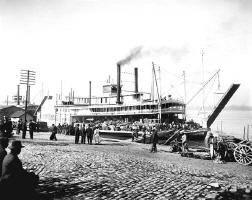 |
 |
|
Major Mule Market |
1911 -
Busy Port |
|
Busy Port
1906 |
| |
|
|
|
|
Mississippi Riverboats calling at Memphis...
Before 1859, the Memphis Landing and
was quite different from the existing stone pavement one sees
today.
Drawings from the 1840s show the Landing as an expanse of
rough, eroded bluff terraces, divided by road cuts through the
terraces to reach a narrow strip of land at the water's edge.
The river's edge was subject to erosion by the currents of the
River and proved to be an unreliable place for river traffic
to land. Falling water levels revealed drops in the
slope of the embankment, caused by erosion. The vertical
movement of the Mississippi River sometimes exceeds 50 feet
between periods of high and low water. During periods of low
water, river passengers and laborers had to walk over 200 feet
of the unstable bank before reaching compacted ground.
It was unusually difficult, and virtually impossible during
rainy periods. Once the Cobblestone Landing was
completed, conditions were far more favorable to commerce, and
Memphis
became a MAJOR river
port. |
| |
|
|
|
| |
|
|
|
 |
 |
 |
 |
|
Memphis Landing 1870 |
|
|
|
| |
|
|
|
| |
|
|
|
|
2011...
Today, the historic cobblestones have fallen into disrepair.
The result is unsafe walking conditions which can result in
injuries or lawsuits. Mud and weeds are claiming
significant portions of the landing, and patches of unsightly
asphalt cover gaps in the stone - testifying to a previous
botched restoration. There's been further
deterioration as a result of erosion and settling. All of these problems
can be solved by restoring the landing and preventing further
deterioration. A 1996 survey estimated there were more
than 800,000 of the original cobblestones left at the
landing. |
| |
|
|
|
 |
 |
 |
 |
| Missing
Cobblestones |
Missing
stones... |
Stretches of missing stones... |
Cement grout... |
| |
|
|
|
 |
 |
 |
 |
|
Neglect
|
Neglect
|
Weeds... |
Bad Asphalt Restoration |
| |
|
|
|
|
|
Controversy over restoration plans... Of
course there's controversy. Long-time
Memphians will have no trouble believing that originally, the city actually thought
about demolishing the Cobblestone Landing? Eventually the City proposed
building a large dock at the foot of Beale Street, named "Beale Landing", and then restoring
the existing cobblestones, adding a "foot" at the bottom
so the stones wouldn't slip into the water. The critics
insist that Beale Landing is a waste of money, because Mud Island
already has the dock built that could be used by ships for
"day cruises". In addition, the Beale
Landing has nothing to do with history or the cobblestone
landing. In fact, it's a "dock" - not a landing. They also say that if
a footing is
added to the bottom of the cobblestones, riverboats won't be able to come in as they always have
- and that destroys the history part of the renovation.
Rip-rap footing is a
layer of jagged ruble-stones and is used for erosion control,
NOT for boat landings. Any boater will tell you that you
land on rip-rap at your own risk, because it can destroy the
bottom of barges. Rip-rap is also a trash-collector and
this would be exposed 50% of the time, at low tide. |
|
|
| |
|
|
|
 |
 |
 |
 |
|
Beale Landing* |
Garrow Report
** |
The Rip-Rap footing |
The concrete walkways |
|
| |
|
|
|
|
Objections to the Restoration Plans...
The
main objection to the restoration plan seems to be the stone
rip-rap or the "foot" at the bottom, designed to keep the
stones from slipping into the water. Critics say this
will prevent River Boats from being able to come up to the
landing, and make it impossible for small boats. In
addition it will "inhibit access to the river", and at low
tide, would be exposed 50% of the time - showing unsightly
trash that has been collected. A secondary objection is
the concrete walkway extending down the landing and destroying
the historic appearance. Critics say that walking on
cobblestones requires your attention. Europe wouldn't
think about discontinuing their cobblestones. Why should
Memphis? And you wouldn't expect to see concrete
walkways over a sandy beach to make it easier to get to the
water - so why add them over a cobblestone landing?
The
rallying cry is "Restoration, not alteration". |
| |
|
|
|
| |
|
|
|
|
Once-Busy
River Port...
It's not easy to establish exactly when the Memphis Landing
slipped in commercial importance and prestige. Some say
that when the Frisco Bridge was built, the decline started.
Others say it had to do with the agricultural depression that
began in the 1910s. But everyone agrees that one factor
was the isolation of the Memphis Landing from the main channel
of the River by the growth of Mud Island. The growth of
the Island is narrowing the main channel. |
| |
|
|
|
 |
 |
 |
 |
| Map with
Mud Island |
|
1915 Illustration |
1895 Postcard |
| |
|
|
|
 |
 |
 |
 |
| |
|
1900 |
1911
Postcard |
| |
|
|
|
|
With the Renaissance
of downtown Memphis, and the development of the Beale Street
Historical District, the city has become a major tourist
destination. It's not much of a stretch to realize that
the port landing will become part of this Renaissance, because
River Cruises are a major draw for today's travelers.
Thus, proper restoration, with attention to "HISTORY" should
be a top priority for the City when the Cobblestone Landing is
restored. After 150 years
of continuous and thriving use, if the city continues with the
current "Rip-Rap" footing plan for the landing,
Memphians and tourists will never again see those grand
riverboats tied up at the foot of the Cobblestones, like in
the numerous photos on this web page.
|
| |
| |
|
<>
Vintage Riverboat Photos and Memorabilia <> |
| |
 |

 |
 |
 |
|
1875 Ticket |
Gambler .
Invoice 1880 |
The "Hard Cash" |
A "Hard Cash"
1881 Bill |
| |
|
|
|
 |
 |
 |
 |
| The
"Jewel" |
A
"Jewel" 1911 Bill |
Vintage Ad |
1870
Ticket |
| |
|
|
|
 |
 |
 |
 |
|
The "James Lee" |
A "Lee Line" 1894 Pass |
A "Lee Line" Room Key |
Vintage Ad |
| |
|
|
|
 |
 |
 |
 |
|
The "Senator
Cordill" |
"Cordill" Lounge |
"Cordill" Dining |
The "Stackler Lee" |
| |
|
|
|
 |
 |
 |
 |
|
The "Hollywood
Showboat" |
"Showboat" 1933
Ad |
1859 Ad |
Vintage Roulette |
|
|
|
|
|
 |
 |
 |
 |
|
"Georgia Lee" 1906 |
The "Belle of Bends" |
"James Lee" 1910 |
"Lee""Lee""St.Joe" 1900 |
|
|
|
|
|
 |
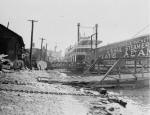 |
 |
 |
|
Cobblestones 1905 |
"Kate Adams" |
"Kate Adams" Lounge 1903 |
"Crescent City" Dining 1900 |
|
|
|
|
|
 |
 |
 |
 |
|
Riverfront Sign |
Lee Line Post Card 1909 |
Lee Line Tokens 1865-1929 |
BiPlane -
Cobblestones 1919 |
|
|
|
|
|
 |
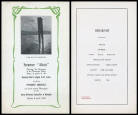 |
 |
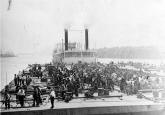 |
|
"Oleander" 1920 |
Alton Menu 1907 |
Cobblestones 1920s |
Floor Refugees 1927 |
|
|
|
|
|
 |
 |
 |
 |
|
"Belle Memphis" 1895 |
"Island Queen" 1939 |
"Alice Dean"
1867 |
Cobblestones - 1906 |
|
|
|
|
|
 |
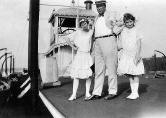 |
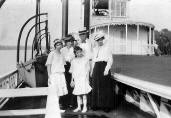 |
 |
|
"Idlewild" 1920 |
Sells Family-1915 "Idlewild" |
Sells Family-1915 "Idlewild" |
|
|
|
|
|
|
|
|
 |
|
"John Iverton" c 1893 |
Before
Cobblestones |
"Oakland" c
1893 |
Lumber |
|
"Princess", 1924
|
|
|
|
|
|
 |
 |
 |
 |
 |
| ShowBoat -
1900s |
Safety
Instructions |
Dining Room |
James Lee
Salon |
Robt E. Lee
Salon
|
|
|
|
|
|
|
 |
 |
 |
 |
|
1924 Parking on Cobblestones |
"James Lee" 1910 |
"J. B. Smith" |
Cobblestones c.1910 |
|
|
|
|
|
|
 |
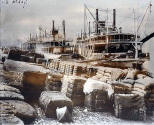 |
 |
 |
|
Cobblestone Workers |
Beales on Cobblestones |
Lee Line Serving Dish |
Lee Line Spoons |
|
|
|
|
|
|
 |
 |
 |
 |
 |
|
White River
Ticket 1885
|
Presentation Anchor |
Salon |
Vintage
|
Memphis-Ark
Pass 1897 |
|
|
|
|
|
|
 |
 |
 |
 |
|
Memphis Cotton
Boat |
Cobblestones 1930 |
Lumber arrives |
Cobblestoens 1927 |
|
|
|
|
|
|
|
|
| |
 |
 |
 |
 |
|
Tugboat Mamie Coyle |
Mamie Coyle 1914 |
1899 Kate Adams |
Landing 1902 |
|
| |
 |
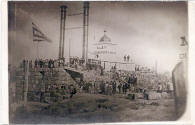 |
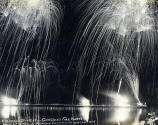 |
 |
| 1862 Memphis
Landing |
Steamer Red Cloud 1874 |
Fireworks - 1919 |
1891 Memphis
Skyline |
|
| |
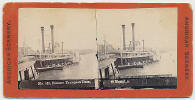 |
 |
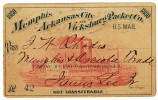 |
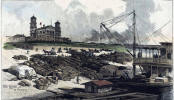 |
| 1880s The Thompson Dean |
1900 Brochure |
1880 Lee Pass |
1887 Memphis Levee |
|
| |
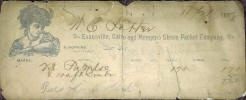 |
 |
 |
 |
|
1883 Ticket
|
1892 Landing |
1931 Cobblestones |
Vintage Memphis
Landing-Skyline |
|
| |
|
|
| |
 |
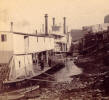 |
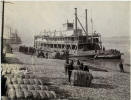 |
 |
 |
| l880s |
Bingham-Hilliard photo |
|
|
Mississippi Ice 1917 |
|
| |
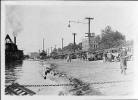 |
 |
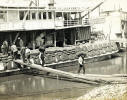 |
 |
 |
|
1927 |
Vintage Ships |
c. 1800s Unloading |
Panarama |
Kittie Hegler 1800s |
|
| |
| |
| |
| |
|
* The Beale Street Landing |
| |
|
|
|
|
Memphis is at the widest point along
the Mississippi River. Over 50 stops are made by major
boats each year - not including local excursion boats.
The city felt that a modern docking facility was needed along
the waterfront and the natural place for it would be where the
Cobblestone Landing meets Tom Lee Park - at the foot of Beale
Street.
In the summer of 1994, the City began
digging up the Cobblestone Landing at the foot of Beale Street
in preparation to move the Tom Lee Monument there.
Before they could be stopped by the Army Corps of Engineers, the
City workers had already destroyed a large section of the
cobblestone landing and had carted away two acres of the
historic cobblestones, and unearthed artifacts from the
beginnings of the City's history. And...they hadn't
even secured the necessary permits and approvals for this project.
After a major delay, including a revised plan to make the
Beale Landing blend in with the Cobblestone Landing, the work
continued.
In
addition to the large floating dock, it will include a building for a
restaurant and a park.
In August of 2011, the Beale Landing is behind schedule and is plagued by
rising costs.
|
| |
|
|
|
|
**
The Garrow Report
The City of
Memphis recognized that the surface of the Landing should be
improved. They hired Garrow & Associates to perform the
study and prepare the plan. Their two-volume report is
formally titled, Memphis Landing Cultural Resource
Assessment and Preservation Plan (December 1995/January
1996). Informally, it is commonly known as the Garrow
Report, Part 1 and Part 2.
Garrow Report greatly condensed:
"...prepare a preservation plan for the total remaining
cobblestone area north of the Tom Lee Monument relocation
project area. The preservation plan shall include, but not be
limited to: 1) Additional archival research 2) Mapping and
photo-documentation of the cobblestones 3) Geologic study of
the cobblestone area that includes distribution, size,
texture, pattern, and lithology of the entire cobblestone area
4) Plan for future renovation programs including repair
methods 5) Plan for future potential economic developments and
long-tenn maintenance in the area (restaurants, boat docks,
general accessibility, etc.) 6) Plans for interpretive
booklets and exhibits. To these ends, Garrow Associates
presented a proposal to the City outlining a multidisciplinary
approach to the problems of preservation, maintenance, and
future development of the Memphis Landing". |
| |
|
|
|
|
Garrow Report, Part 1: Cultural Resource Assessment
Garrow Report, Part 2: Preservation Plan
|
|
|
|
|
|
|
Vintage Postcards of Memphis
Cobblestone Landing |
| |
|
|
|
 |
 |
 |
 |
|
1907 |
1913 |
1915 |
1910 |
| |
|
|
|
 |
 |
 |
 |
|
1935 |
1905 |
c.1900 |
1895 |
| |
|
|
|
 |
 |
 |
 |
|
1906 |
1908 |
1913 |
"Trucking" |
| |
|
|
|
 |
 |
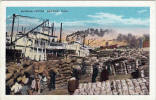 |
 |
|
Delta Queen |
Katie Robbins 1908 |
1910s |
1908 |
| |
|
|
|
 |
 |
 |
 |
|
1900s
|
1910 |
1910 |
1907 |
| |
|
|
|
 |
 |
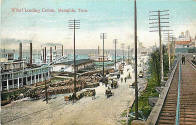 |
 |
|
Snagboat Wright 1905 |
1912 |
1910 |
1939 |
| |
|
|
|
 |
 |
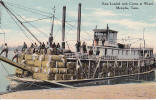 |
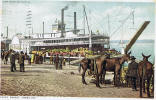 |
|
Vintage
|
Vintage
|
1907
|
James Lee |
| |
|
|
|
 |
 |
 |
 |
|
The New Wagon...
|
1906 |
1908
Government Fleet |
Stacker Lee - 1906 |
| |
|
|
|
 |
 |
 |
 |
|
At the Wharf |
1912 |
1909 |
1916 |
| |
|
|
|
 |
 |
 |
 |
|
1906 |
French
Card |
Vintage
Riverbluff |
...approaching |
| |
|
|
|
 |
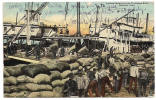 |
 |
 |
|
Riverfront
|
1913 |
T. P.
Leathers |
Skyline |
| |
|
|
|
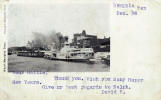 |
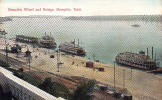 |
 |
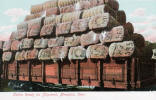 |
|
Vintage Wharf
|
Busy Port |
SS. Brown |
Ready for Shipment |
| |
|
|
|
 |
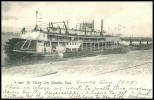 |
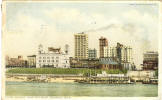 |
 |
| 1906 Watching
Steamboats |
1905 Stacker Lee |
1912 |
1914 Memphis
Levee |
|
| |
 |
 |
 |
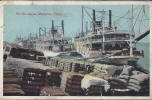 |
| 1880s
M'Lellan Schedules |
1852
Gladiator |
1911 |
On the
Levee 1935 |
|
| |
|
|
| |
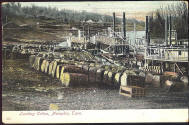 |
|
 |
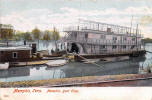 |
|
1909 |
|
1906 |
Memphis Boat Club
1907 |
|
|
|
|
|
|
|
| |
|
|
|
|
|
Thanks to the Memphis Public Library and the University
of Memphis Library for many of the photos on this page |
|
|
|
Email
... |
|
|
|
"...The cobblestones
brought back some memories to me. In the summer of 1951 I worked as a
driver unloading mostly Chrysler automobiles, a few GM cars, and some Army
vehicles. They would call us to let us know a barge was coming in and we
would go to work day or night. We would unload the cars and sometimes park
them on the cobblestones and sometimes drive them to a designated lot. We
would drive a car off the barge, park it and walk the cobblestones back to
drive another car. I remember the only shoes I had to wear were some
leather moccasins and this was hard on my feet. (This was the summer
before I was to start going to Memphis State where I saw Joyce Sides and
we started dating (1949). I had previously met her when I was dating
another Tech girl). They decided we had to have chauffeur's licenses
so the barge company apparently made a deal for us to go by the Tennessee
Highway Patrol office on front and exchange our licenses for chauffeur's
licenses".
- Winford Baker, Memphis
"...I too drove cars off the boats,
only I was a year or so early when the French Renaults came to the U.S.
and at that time we weren't even required to have a driver's license, as
we only drove them from the barge to the cobblestones and parked them and
then came back for more to unload. Great memories...!"
- Bob Harris,
Pensacola Beach FL |
|
|
|
|
|
|
|
Credits |
|
|
|
The
Historic-Memphis website does not intentionally post copyrighted
photos and material without permission or credit.
On
occasion a "non-credited" photo might possibly be posted because we
were unable to find a name to give credit. Because of the nature of
our non-commercial, non-profit, educational website, we strongly
believe that these photos would be considered "Fair Use. We have
certainly made no monetary gain, although those using this website
for historic or Genealogy research have certainly profited. If by
chance,
we have posted your copyrighted photo, please contact us, and we'll
remove it immediately, or we'll add your credit if that's your
choice. In the past, we have found that many photographers
volunteer to have their works included on these pages and we'll
also do that if you contact us with a photo that fits a particular
page. |
|
|
|
The "Historic-Memphis" website would like to acknowledge and thank the
following for their contributions which helped make this website
possible: Google
Earth, Memphis
Public Library, Memphis University Library, Memphis Law Library,
Memphis Commercial Appeal, Memphis Press Scimitar, Shelby County
Register of Deeds, Memphis City Schools, Memphis Business Men's
Club, Memphis Chamber of Commerce, Memphis City Park Commission,
Memphis Film Commission, Carnival Memphis, Memphis Historical
Railroad Page, Memphis Heritage Inc, Beale Street Historic District,
Cobblestone Historic District, Memphis Historic Districts, Vance
Lauderdale Family Archives, Tennessee State Archives, Library of
Congress, Kemmons Wilson Family, Richard S. Brashier, Lee Askew,
George Whitworth, Woody Savage and many individuals whose assistance is
acknowledged on the pages of their contributions. Special
thanks to Memphis Realtor, Joe Spake, for giving us carte blanche
access to his outstanding collection of contemporary Memphis photos.
We do not have high definition copies of the photos on these
pages. If anyone wishes to secure high definition photos,
you'll have to contact the photographer or the collector.
(To avoid any possibility of contributing to SPAM, we do not
maintain a file of email addresses for anyone who contacts us). |
|
|